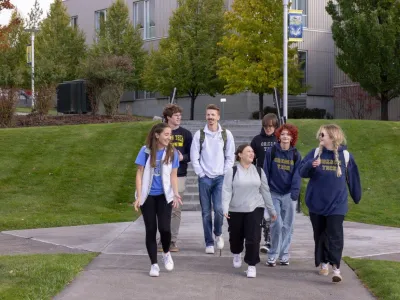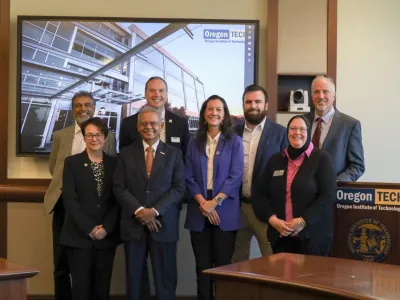The "passengers" riding in the back of a new, one-of-a-kind medical training vehicle may be manikins, but they are certainly no dummies.
The lifelike figures breathe, sweat, bleed and even talk. And their sophisticated ability to create simulated mobile medical emergencies is about to play a critical role training paramedics, EMTs, firefighters and EMT students in Washington County and surrounding areas.
"What we're embarking on here is unique," said Jonathan Chin, head of Washington County's Emergency Medical Services office. "People are watching us not only on the state level, but the national level, as well."
Use of high-fidelity simulation equipment at teaching hospitals and community college nursing and EMT-training programs has grown rapidly in the past few years.
What hasn't been unveiled, until now, is a mobile simulator that is equal parts ambulance and advanced hands-on classroom.
Trainees, including volunteer EMTs in the far reaches of western Washington County, will tackle challenges such as starting IVs, opening blocked airways and injecting fluids and medications directly into the bone -- all under a trained supervisor while rolling down bumpy roadways.
A series of high-resolution cameras inside the vehicle will show the action in real time and capture it for detailed debriefings afterward.
At the whim of a trainer sitting in the front seat, the manikins can change everything from their breathing and abdominal sounds to dilations of their pupils to their heart rates and blood pressure.
"The entire goal of simulation is to suspend the disbelief of the participants," said Dr. Rob Cloutier, director of simulation at OHSU's Department of Medicine. "The more immersive it is, the more effective it can be."
Project partnership
The project, five years in the making, involves four partner organizations: OHSU, Portland Community College's Cascade Campus, Oregon Institute of Technology Portland and Washington County EMS.
The partner agencies say that no one of them could have afforded the estimated $350,000 to $400,000 cost of the simulator. But by splitting a tab dramatically reduced through in-kind donations and industry vendors' price reductions, all pieces of a complicated puzzle finally came together.
"We never intended to be first out of the gate with this," said John Saito, dean of allied health, emergency and legal services at PCC's Cascade campus. "But once things got going, they just pretty much took off."
Although the vehicle will get a public unveiling Monday at 1 p.m. at Hillsboro Fire Station #6, it is already being introduced to the students and professionals who will soon be training in it.
"It's such new educational methodology," Saito said. "Before students actually begin working in the simulator, they need to be grounded in the educational pedagogy surrounding it."
That includes introducing them to the extensive, video-reliant debriefing sessions that will follow all training exercises.
What actually took place during simulations in the past largely hinged on the respective recollections of the students and instructors involved, Saito said.
"But now, with the audio-visual record we'll have, what happened during the simulation is indisputable," he said. "It's there and on the record."
Rural uses
Washington County took the lead on the project, in part because it is the local regulatory oversight agency for emergency medical services. The county holds title to the vehicle and is responsible for insuring it.
Every bit as compelling, however, was the recognition that paramedics and EMTs in rural areas need specialized training just as much as their counterparts in Hillsboro and Beaverton.
"It tremendously levels the playing field for specialized training in both ends of the county," Washington County's Chin said.
Which is precisely why the mobile simulator may well catch on in other parts of Oregon, added OHSU's Cloutier.
"We are largely a rural state, where ambulance transport times can be quite extended," he said. "It's very important that first responders keep their pre-hospital skills current and this is an excellent way to ensure that."
Levi Eckhardt, training officer for Banks Fire District, agreed.
"It will be a great benefit to our EMTs and first responders," he said. "And it means we won't have to travel so far or so long to get the same sort of high-tech training everyone else will be getting."
He is also excited about the prospect of his volunteers working with the new medical manikins.
"They do lots of different things and act in ways that instructors can alter on the spot," Eckhardt said. "It's pretty amazing."
Dummies, it seems, they are not.









